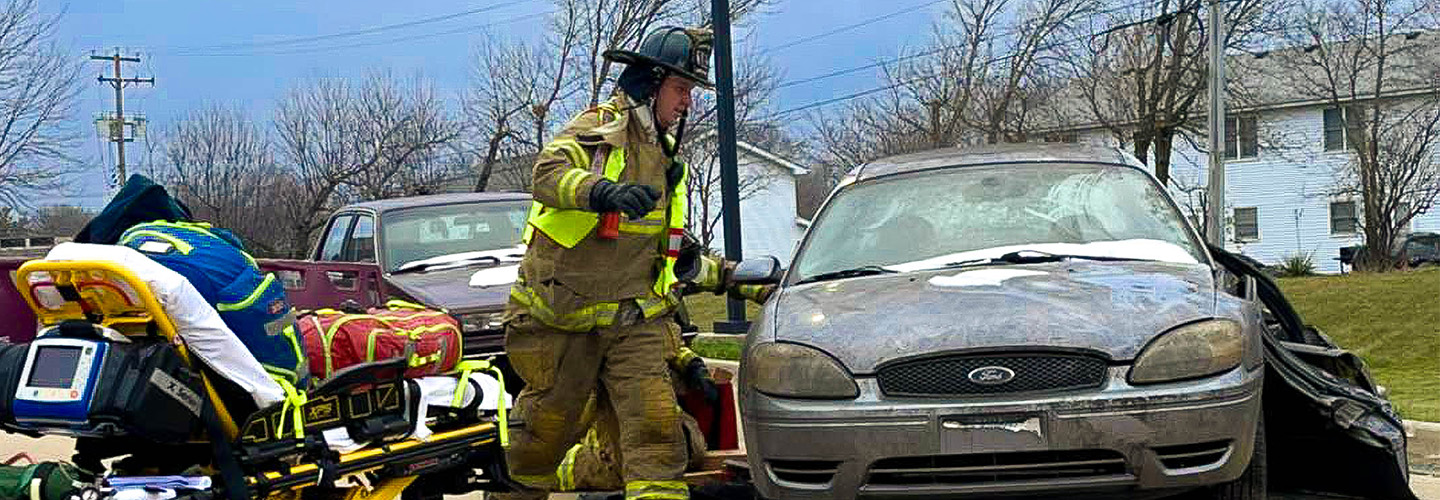Ambulance runs can go to the most remote of places—in both rural and urban environments. A useful piece of technology for EMS is FirstNet’s high-power user equipment, or HPUE. HPUE boosts signal power up to six times the normal strength at the edges of the network. Lieutenant Humza Shamsuddin, Technology Director for the Bristol Kendall Fire Protection District in Illinois, explains how his agency uses HPUE for EMS.
Diverse service area
The Bristol Kendall Fire Protection District covers about 81 square miles with 40,000 people. The district is unique because it encompasses everything from urban subdivisions to farm communities.
“We have a diverse geographic area, including a river valley that impedes communication where you tend to drop off the radar for cellular communication,” said Lieutenant Shamsuddin.
Many of these coverage gaps were addressed when the agency switched to FirstNet. “The areas that we knew were dead zones for a previous carrier—magically, we didn't really have them with FirstNet.”
The agency uses FirstNet for voice communications and mobile data connectivity throughout its service region. Because it has mutual aid agreements with neighboring districts, the EMS team often travels further afield where they also rely on FirstNet.
HPUE connects in fringe areas
At the edge of the network’s reach, HPUE can improve connectivity and uplink data speeds to keep first responders communicating. HPUE gives public safety devices the power to punch through and maintain connection to the network when traditional devices might slow or drop off entirely.
“In fringe network areas, HPUE allows us to stay connected with a higher level of reliability,” said Lieutenant Shamsuddin.
With HPUE’s increased signal, EMS and other first responders get an enhanced experience with better range, coverage, penetration, and capacity for their devices.
Lieutenant Shamsuddin said that this enhanced experience makes a difference for his agency’s operations. “There were still areas that had issues because of geography. Once we brought in HPUE, it helped to fill in those gaps because we can transmit at a higher power.”
How EMS can use HPUE
HPUE is especially useful for EMS operations because it provides:
- Greater range in the ambulance
- Better video quality
- Reliable, secure transmission for 12-leads, medical records, and other data
“Leveraging HPUE allows us to maintain connections not just for dispatch information but also for connecting our cardiac monitors to send 12-leads from the field,” said Lieutenant Shamsuddin.
The Bristol Kendall Fire Protection District participates in the RUSH TeleStroke Network, a telemedicine program. They do a video call from the scene with a remote neurologist to determine if a patient is having a stroke and to prepare the right resources at the hospital for the incoming patient.
“HPUE and the more robust and reliable network of FirstNet have allowed us to initiate those calls even when we are in a very rural setting,” he said.
Government-backed solution for public safety
HPUE is designed for EMS and other first responders on FirstNet. HPUE transmits stronger signals by using Band 14 spectrum and specially designed FirstNet modems. FirstNet’s Band 14 is the only spectrum band in the United States operating with HPUE.
FirstNet’s HPUE product is called FirstNet MegaRange™. MegaRange has three device options: one that can be installed in the ambulance, one in a portable carrying case for on-the-go use, and one for fixed use to boost FirstNet in remote sites.
The FirstNet Authority worked with regulators and standards bodies to ensure that first responders got access to this important technology. HPUE is built to mission-critical standards developed by the 3rd Generation Partnership Project, or 3GPP.
These oversights and assurance were important to the Bristol Kendall Fire Protection District in choosing FirstNet. “When I learned about how the network is designed and the fact that it's actually government sponsored, I started to see how FirstNet’s reliability and coverage could help us, especially in disaster response,” said Lieutenant Shamsuddin.
To learn more about how FirstNet is helping public safety and the EMS community to leverage innovative public safety communications, sign up for the EMS newsletter.




















